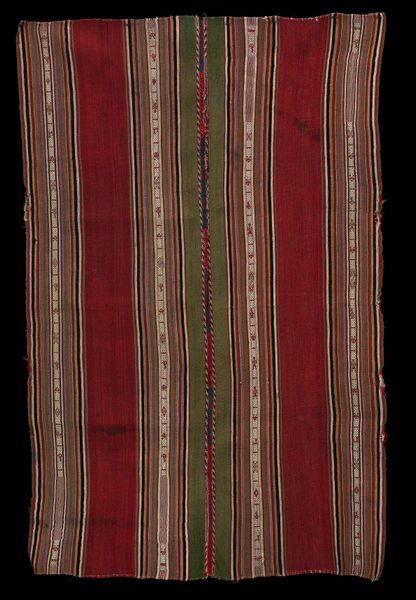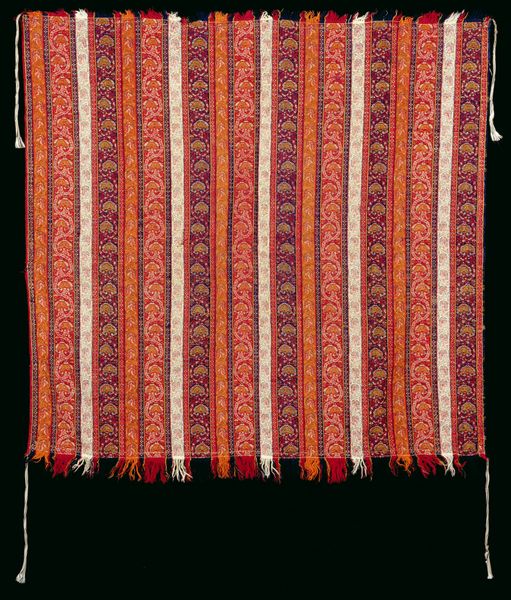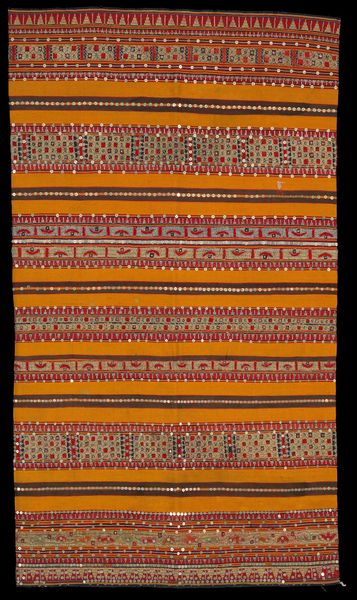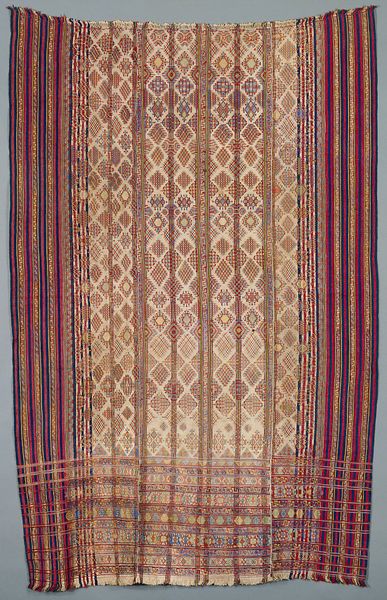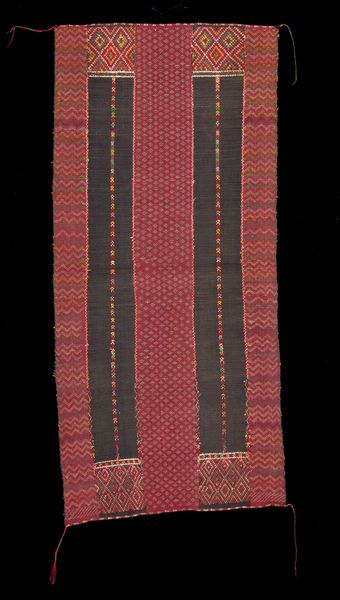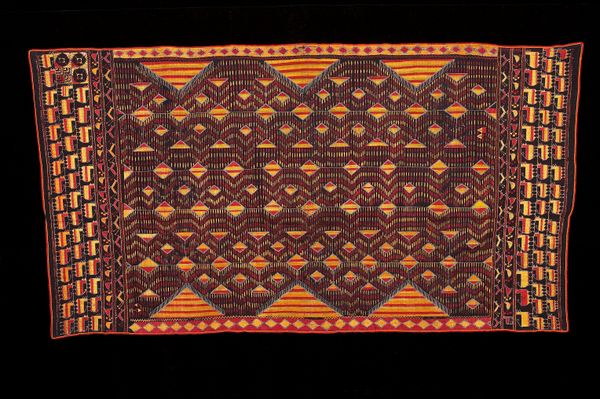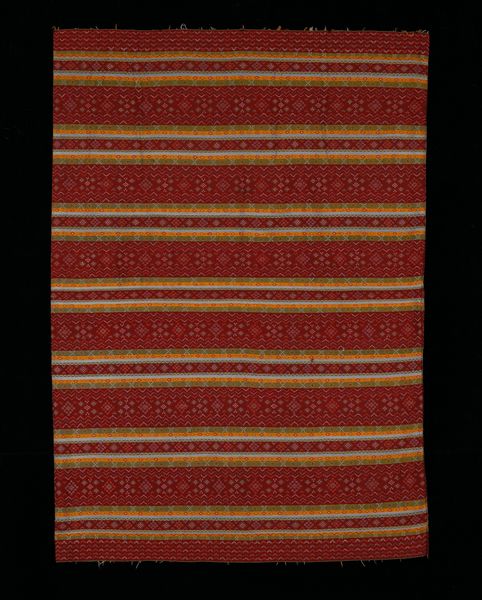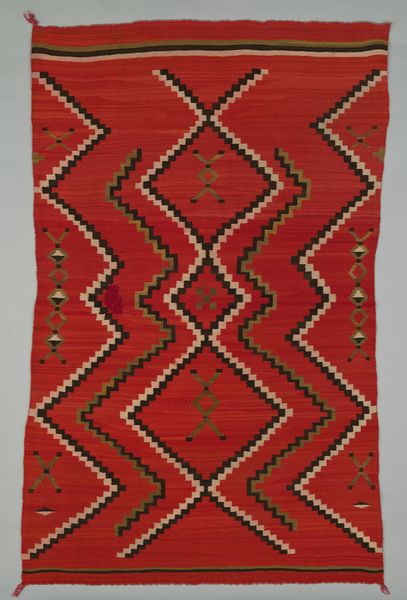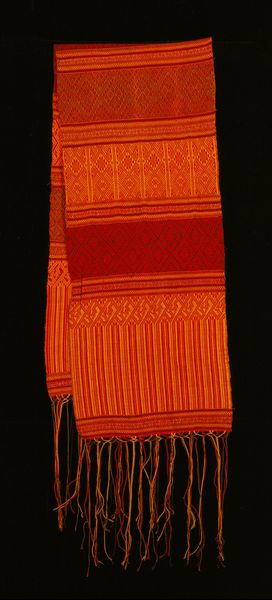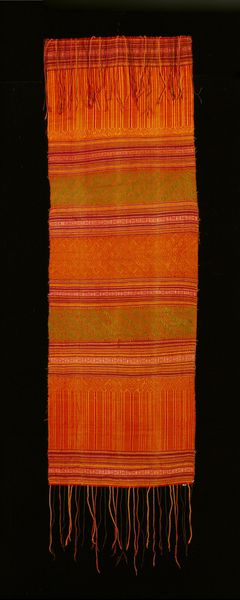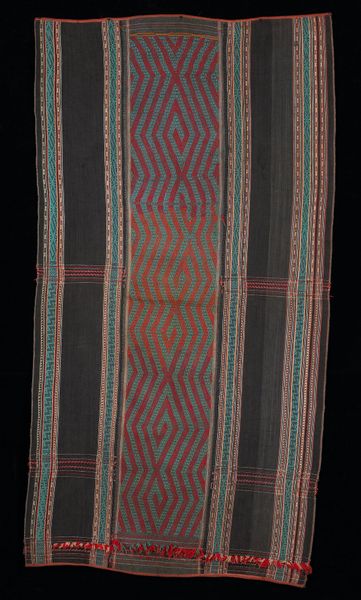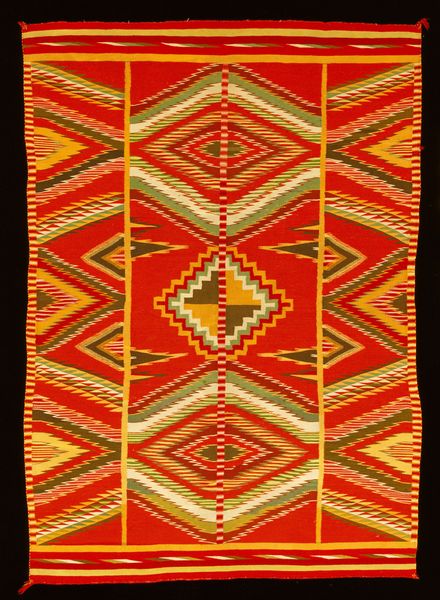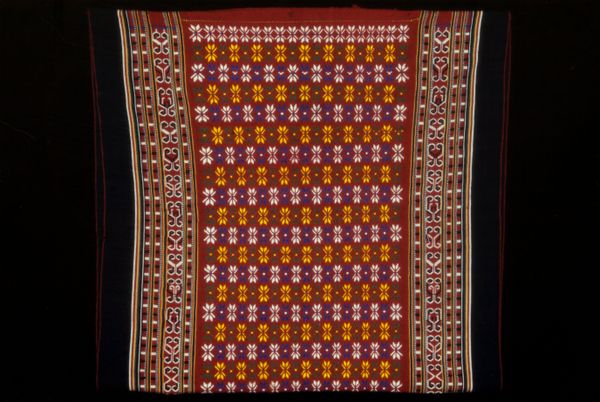
textile
#
textile
#
geometric pattern
#
geometric
#
line
#
pattern repetition
#
repetitive pattern
Dimensions: 64 x 56 in. (162.56 x 142.24 cm) (including fringe)
Copyright: Public Domain
This Poncho, or Punchu, in front of you was made by an anonymous artist, using weaving. Weaving is a slow, skilled process that requires patience and precision. The poncho is made entirely from wool, dyed in various shades of red, brown, yellow, and white. The tight, vertical stripes create a stunning visual rhythm. The use of natural materials, and simple geometric patterns imbues the poncho with a deep connection to the environment. The significance lies in the labor-intensive process of creating the poncho. Each thread has been carefully placed, and each pattern meticulously woven, probably on a backstrap loom, which is a technique used for millennia, if not longer. The act of weaving becomes a meditation, a way of connecting with tradition and community. Understanding the process, the materials, and the cultural context allows us to see the poncho not just as a garment, but as a testament to the enduring power of human creativity. It challenges the traditional separation between fine art and craft, highlighting the artistry inherent in everyday objects.
Comments
minneapolisinstituteofart almost 2 years ago
⋮
Since the Spanish conquest, sheep’s wool has joined alpaca, llama, and vicuña wool as a preferred fiber for weaving. Today, machine-spun yarn has become a symbol of status, but many garments are still made of hand-spun wool. The traditional spinning process takes part in three stages. The raw wool is first spun into a fine strand, and then spun again to create two plies. After it is dyed, it is re-spun very tightly, into what is called a “crepe twist.” This third and final step produces extremely elastic, fine yarn that creates a warm and durable garment. The zig zag and diamond patterns in this poncho were created by resist-dyeing (ikat).
Join the conversation
Join millions of artists and users on Artera today and experience the ultimate creative platform.
